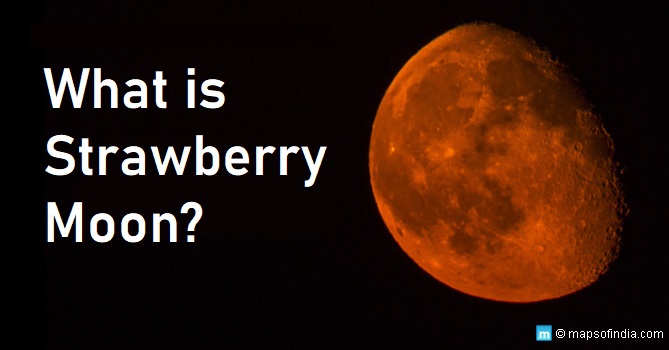Strawberry moon takes place in June, showcasing a beautiful full moon when it is within 90% of the perigee (its closest attempt to Earth 3,63,711 kilometres). According to the National Aeronautics and Space Administration (NASA), the term comes from the Native American season for harvesting strawberries.
It occurs after 72 hours of Solstice, which is the longest day of the year for the Earth’s northern hemisphere. The full moon will be visible in India at 12:09 am on June 25 for three days and at 2:40 pm as per EDT. NASA said, “While this will be on Thursday for much of the Earth, from India Standard Time eastward to Line Islands Time, and the International Dateline, this will be on Friday morning. The moon will appear full for about three days around this time, from early Wednesday morning through early Saturday morning.”
In 1979, the astrologer Richard Nolle coined the word “Supermoon”. It has significance in different cultures as for Hindus, the full moon of Jyestha month equivocates with Vat Purnima, which is a practice where married women show their affection for their husbands by tying a ceremonial thread on a banyan tree. In contrast, for Buddhists, the full moon equivocates with the Poson Poya in Sri Lanka, which is marked to celebrate the setting up of Buddhism in the country back in 236 BCE.
The Algonquin, Ojibwe, Dakota and Lakota are indigenous American tribes. The Old Farmer’s Almanac said, “This name (Strawberry Moon) has been used by Algonquin, Ojibwe, Dakota, and Lakota peoples, among others, to mark the ripening of ‘June-bearing’ strawberries that are ready to be gathered.”
On the formation of the Strawberry Moon, NASA stated, “The orbit of the moon around the Earth is almost in the same plane as the orbit of the Earth around the Sun. When the Sun appears highest in the sky near the summer solstice, the full moon opposite the Sun generally appears lowest in the sky.”
In Europe, the full moon is known as the HoneyMoon or Rosemoon. This term dates back to 16th century Europe when the month-end was typically the duration when honey was prepared for harvesting. The first month of marriage is also this because marriages took place in large numbers when the ‘sweetest’ moon of the year embellished the night sky. Rosemoon indicates the start of the harvesting of roses.
“Particularly for Europe’s higher latitudes, the full moon nearest the summer solstice shines through more atmosphere than at other times of the year. This can give the full moon a reddish or rose colour, mainly because it is the colour of the rising Sun,” NASA added.
Usually, there are three full moons between the Summer Solstice and the Equinox, but there are four phases in 2021. The last three Supermoons took place on March 28, April 27 and May 26.
“For 2021, some publications consider the four full Moons from March to June, some the three full Moons from April to June, and some only the two full Moons in April and May as supermoons,” said NASA program executive Gordon Johnston.




